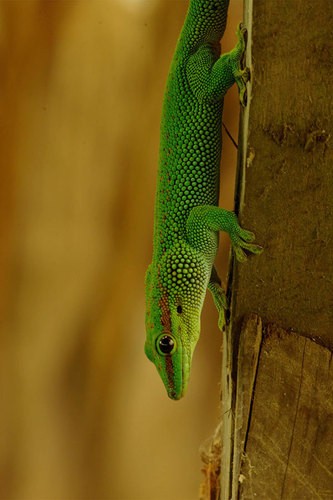Phelsuma madagascariensis madagascariensis
A species of Day geckos Scientific name : Phelsuma madagascariensis madagascariensis Genus : Day geckos
Phelsuma madagascariensis madagascariensis, A species of Day geckos
Scientific name: Phelsuma madagascariensis madagascariensis
Genus: Day geckos
Content
Description General Info
 Photo By sullivanribbit , used under CC-BY-NC-4.0 /Cropped and compressed from original
Photo By sullivanribbit , used under CC-BY-NC-4.0 /Cropped and compressed from original Description
Phelsuma madagascariensis madagascariensis is well-known for its arboreal lifestyle and diurnal activity patterns, preferring lush rainforests on the island of Madagascar. As a dominant omnivore, it maintains balance in the ecosystem by consuming various insects and nectar. An intriguing aspect is its vibrant skin, acting as a non-verbal signal for communication and territory establishment.
General Info
Lifespan
8-12 years
Diet
Phelsuma madagascariensis madagascariensis is an insectivorous species predominantly depending on soft-bodied arthropods, including caterpillars and spiders. Moreover, they also relish nectar and the occasional fruit, supplementing their protein-rich diet.
Appearance
Phelsuma madagascariensis madagascariensis is a medium-sized gecko, with a slender body and smooth, scaly skin. They can grow up to 23 cm in length. They are striking, with a bright green dorsal surface streaked with rust-red stripes. The ventral surface is typically yellowish-white. Phelsuma madagascariensis madagascariensis possesses a triangular head, a long tail and limbs ordained with adhesive toe pads. Both sexes share the same coloration and pattern, and there's no significant physical difference.
Behavior
Phelsuma madagascariensis madagascariensis is diurnal and primarily arboreal, engaging in active foraging during the day for invertebrates and nectar. It is known for its unique blue-green or turquoise coloration, which aids camouflage in its forest habitat. It displays territorial behaviour, with males aggressively defending their habitat from intruders. The species is mostly solitary, except during breeding season.